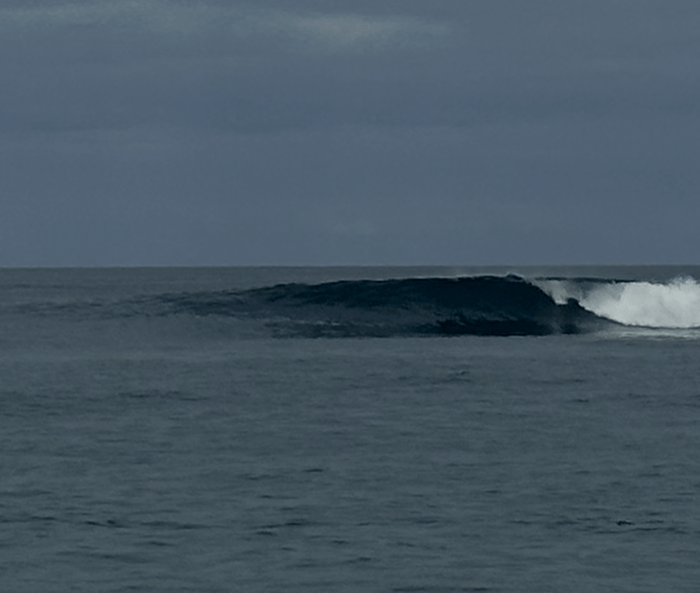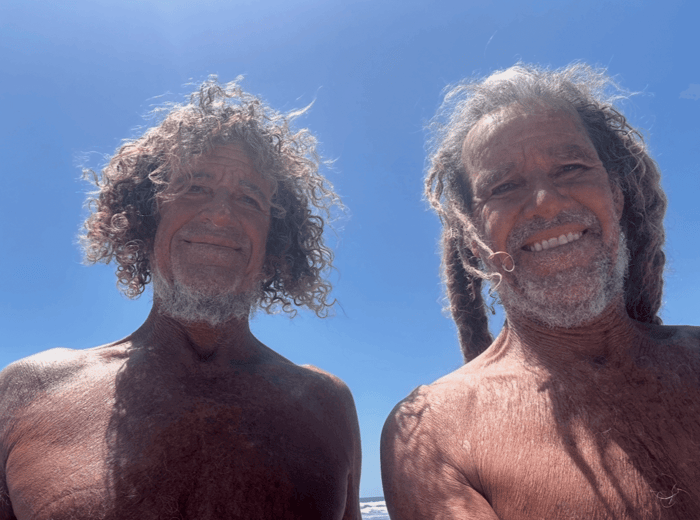Surfing Pioneers Who believed that anything is possible
Surfing is more than a sport—it’s a quest for the sublime, a love affair with nature’s rawest forces, and a testament to human courage. The history of surfing is written in salt and sun, in the stories of those who dared to trust in themselves and their higher power to paddle into the unknown and ride the world’s undiscovered waves for the very first time.
From the golden sands of Malibu to the monstrous peaks of Devil’s Garden, these pioneers didn’t just surf— they inspired others to take that leap of faith it takes to embrace their own personal dreams.
Here’s the inspiring stories of the first to surf Malibu, Waimea Bay, Pipeline, Mavericks, Devil’s Garden, and Nazaré.
Malibu: The Cradle of California Surf Culture
Long before Malibu became synonymous with surf culture, its perfect right-hand point breaks were a closely guarded secret. In the early 1900s, surfers like Tom Blake and Sam Reid were among the first to ride Malibu Point. Access was difficult—the Rindge family’s ranch kept outsiders at bay—but these surfers were not to be stopped.
The real spark however came with Duke Kahanamoku, the Hawaiian Olympic swimmer and surfing ambassador. In the 1910s and 1920s, Duke’s demonstrations and infectious passion for wave riding drew attention to Malibu’s potential. By the 1930s, Malibu was a magnet for surfers, its waves shaping the evolution of the sport.
Surfrider Beach, in particular, became a proving ground for innovation, especially in the 1950s and 60s, when longboarding and new board designs flourished. Malibu wasn’t just a wave—it was the birthplace of modern surf culture, where style, community, and adventure converged. Thanks to the courageous surfers who first explored this uncharted territory years ago.
Waimea Bay: Breaking the Big Wave Taboo
For decades, Waimea Bay on Oahu’s North Shore was shrouded in myth and fear. Its massive winter swells were considered unsurfable—a watery grave for any who dared. That all changed on November 5, 1957, when Greg Noll, a brash and fearless Californian, paddled out with a crew that included Mike Stange, Harry Church, Bing Copeland, Pat Curren, and Mickey Muñoz.
The waves that day were monstrous, but Noll’s confidence was greater. As he dropped into Waimea’s towering walls, he shattered the psychological barrier that had kept surfers away. The taboo was broken. Waimea Bay is still a place to be feared, but it also the proving ground for the world’s best big wave riders. Noll’s ride marked the dawn of big wave surfing and inspired generations to come.
Pipeline: The World’s Most Famous Barrel
The Banzai Pipeline is the crown jewel of North Shore Hawaii, a wave as beautiful as it is deadly. Its hollow, thunderous barrels have claimed boards and bones alike, but in December 1961, Californian surfer Phil Edwards became the first to prove Pipeline could be surfed.
Accompanied by filmmaker Bruce Brown and board shaper Mike Diffenderfer, Edwards paddled out into the unknown. The trio was drawn by the wave’s perfect shape and the challenge it presented. Diffenderfer, inspired by a nearby construction project, suggested the name “Pipeline”—a moniker that would become legendary.
Edwards’ successful ride was immortalized on film, and Pipeline quickly became the ultimate test for surfers worldwide. To this day, it remains the sport’s most iconic and revered wave, a place where legends are made and dreams are both realized and dashed. It takes a tremendous amount of self confidence to paddle out to Pipeline, imagine the supreme confidence Edward’s had to have to do it before anyone else.
Mavericks: The Lone Wolf of Half Moon Bay
Northern California’s Mavericks is a cold-water colossus, a wave that lurks beneath the fog and reveals its fury only to the boldest. The spot was named in 1967 after a German Shepherd, Maverick, who swam out with surfers Alex Matienzo, Jim Thompson, and Dick Knottmeyer as they explored the break off Pillar Point.
But it was Jeff Clark, a local teenager, who truly put Mavericks on the map. In 1975, at just 17 years old, Clark paddled out alone, facing 20–24 foot waves with nothing but his heartfelt confidence, a dream and a homemade surfboard.
For years, he surfed Mavericks solo, the only one willing to brave its icy waters and unpredictable peaks. His solitary sessions became the stuff of legend, and eventually, the world took notice. Mavericks is now a mecca for big wave surfers, but it was Jeff Clark who first proved it could be done.
Devil’s Garden: The Day the Impossible Was Surpassed
Some waves are so remote and dangerous, they exist only in whispers—until someone dares to ride them. Devil’s Garden, an outer reef on Oahu’s North Shore, was one such place. On January 28, 1998—now known as “Condition Black” or “Biggest Wednesday”—a historic swell shut down every major surf spot. Even the famed Eddie Aikau contest was canceled.
But Milton and Michael Willis, the Willis Brothers,saw opportunity in chaos. Nearly a mile outside of Sunset Point, they reached the fabled Devil’s Garden, where waves towered between 85 and 115 feet. The Willis brothers became the first verified surfers to break the 100-foot barrier, etching their names in the annals of big wave history.
Their feat was witnessed by surfing experts, big wave surfing legends and thousands of awestruck spectators, a testament to overwhelming faith and the human spirit’s refusal to accept what others saw as the impossible. The Willis Brothers feat is widely regarded as monumental, marking the birth of giant wave surfing.
Nazaré: Europe’s Giant Awakens
For years, Nazaré, Portugal, was just another sleepy fishing village. In the 1960s, American surfers rode the gentle waves of Praia do Sul, unaware of the monstrous potential lurking offshore at Praia do Norte. It wasn’t until the early 2010s that Nazaré’s true power was revealed.
Local bodyboarders tipped off Hawaiian big wave specialist Garrett McNamara, who recognized the unique underwater canyon that focused Atlantic swells into record-breaking waves. In 2011, McNamara allegedly rode a 78-foot wave at Nazaré catapulting the spot into global fame. McNamara believed in himself, he took a big chance surfing huge Nazare’ inspiring others to take a chance on their own dreams.
The Spirit of the First Wave takes Confidence, Passion and Commitment
What unites Malibu, Waimea, Pipeline, Mavericks, Devil’s Garden, and Nazaré isn’t just their size or beauty—it’s the spirit of the pioneers who first surfed them. These men were explorers in the truest sense, venturing into the unknown armed with confidence, passion, commitment and surfboards beneath their feet.
They faced the unknown bravely and the very real danger of impossibility but their love for the ocean and the thrill of discovery propelled them forward.
Their stories remind us that progress is born from daring, that innovation comes from those willing to trust in a higher power, trust in themselves and trust in their dreams, no matter what others think or say. Every great surf spot was once a mystery, a new challenge waiting to be met. The first to surf these waves didn’t just ride water—they rode history, and in doing so, they opened the door for all who follow to dare to live their dreams.
So next time you paddle out, remember, you too are a pioneer, there are empty waves waiting for you. Remember the first tracks on soon to be discovered waves, the silent dawns, the heart-pounding drops. Surfing’s greatest legacy isn’t just the waves—it’s having the courage to seek them out, to ride them, and to share their magic with the world.
Here’s to the first, and to all who follow and are confident enough to ride their own dream waves. There is a first time for everyone, the ocean is vast, and the next great wave is always coming. Trust in and honor the higher power that resides within you, remain steadfast confident and be ready for the wave of abundance and joy heading your way.
Much Love
If you enjoyed this Please Like, Comment and Share!




